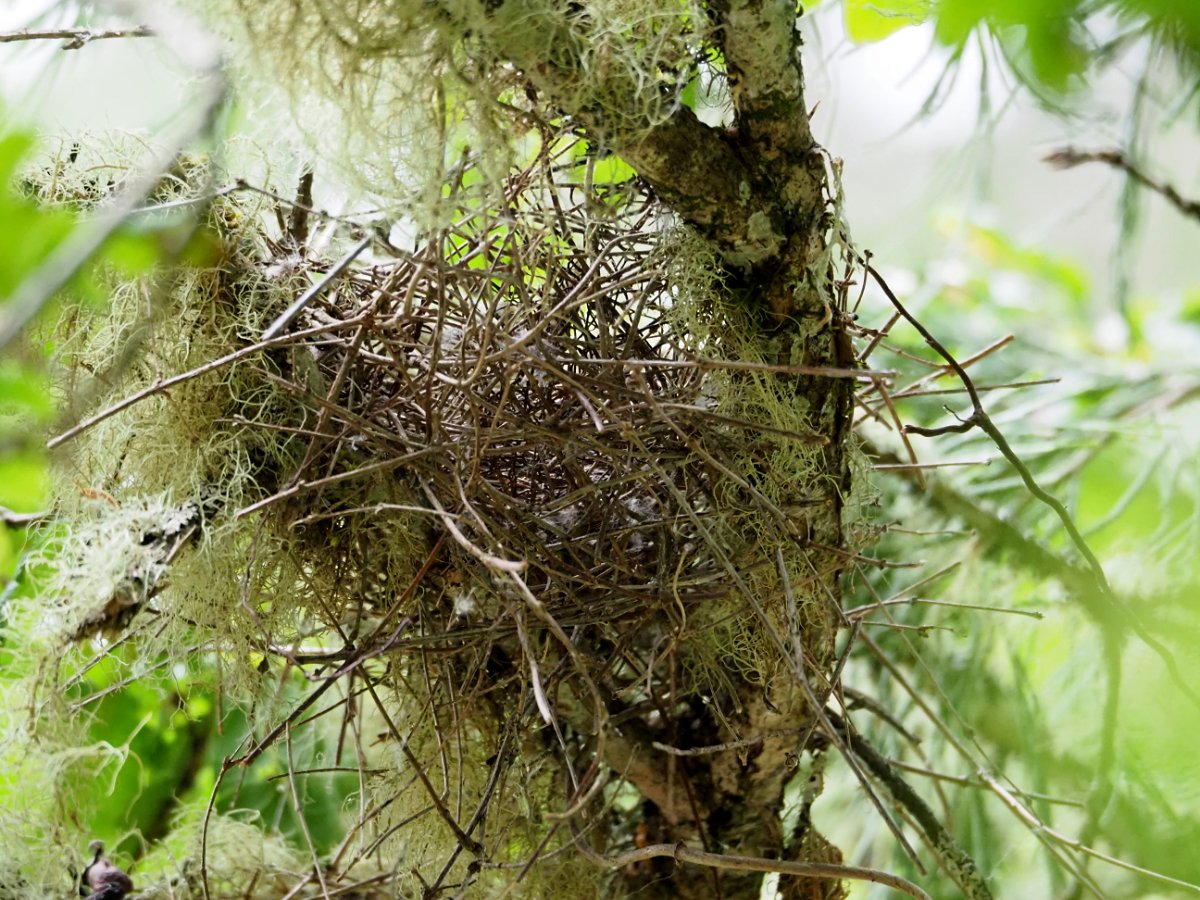Two big cedars are growing next to each other and have joined at the base over the years. The bark on the outer part of one of the trees slightly separated from the tree’s base. It created a sturdy structure protected from the weather and was the perfect location for brown creepers to nest. I observed this nest over the summer but wanted to stay back from it while it was used. The fledglings left the nest about 6 weeks ago, so now it was okay to check it out. I waded through a little poison oak to get a better look at the location. The nest was near the top of the opening where it was about two fingers in width. Below the nest, there was material that probably fell during the construction as they started to anchor it into place. There was a considerable amount down there, enough to make another nest. I wonder why they didn’t retrieve more of those pieces to weave them back into it. I took the nest out and placed it on a bench to look at the materials used to make it. The nest was mostly made of small, thin pieces of cedar bark. The top of the nest consisted mostly of soft, tiny strips of bark fibers with a few feathers tucked in here and there. This created a soft place to lay the eggs and formed a cozy home for the babies.
It is interesting to see a nest that isn’t supported on the top or the bottom. All About Birds by The Cornell Lab says, “She builds the frame of the nest by layering twigs and strips of bark. She uses insect cocoons and spider egg cases to stick those materials to each other and to the inner surface of the tree bark.” I didn’t notice any cocoons or egg cases being used to hold the nest together and in place. It seemed held there simply by friction from wedging the debris into the bark crevice. The inner part of the bark is rough and I am sure provides some support in helping hold it in place. I love finding one of these nests. They are always in fascinating locations.
Nature is an inexhaustible source of wonder. I look forward to seeing you out there.
Resources
Brown Creeper Life History, All About Birds, Cornell Lab of Ornithology. https://www.allaboutbirds.org/guide/Brown_Creeper/lifehistory. Accessed 2 Sept. 2024.

























